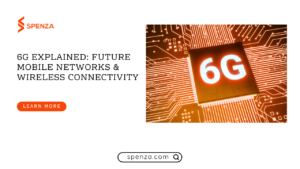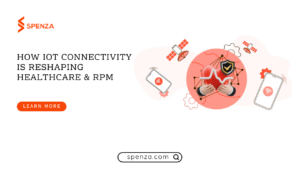TL;DR / At-a-Glance Summary
Stop Competing on Price
Cheap plans attract low-value, high-churn customers. Focus on differentiation, not discounts.
Find Your Hyper-Niche
Target a specific identity or need. Serving a clearly defined audience builds loyalty and defensibility.
Build a Community
Turn customers into advocates through referrals, engagement, and shared identity to lower acquisition costs.
Create Frictionless Experiences
Simplify onboarding with eSIMs and intuitive digital flows to capture customers at peak intent.
Integrate Mobile into a Broader Ecosystem
Use mobile as a loyalty and retention tool by linking it to services, rewards, and brand extensions.
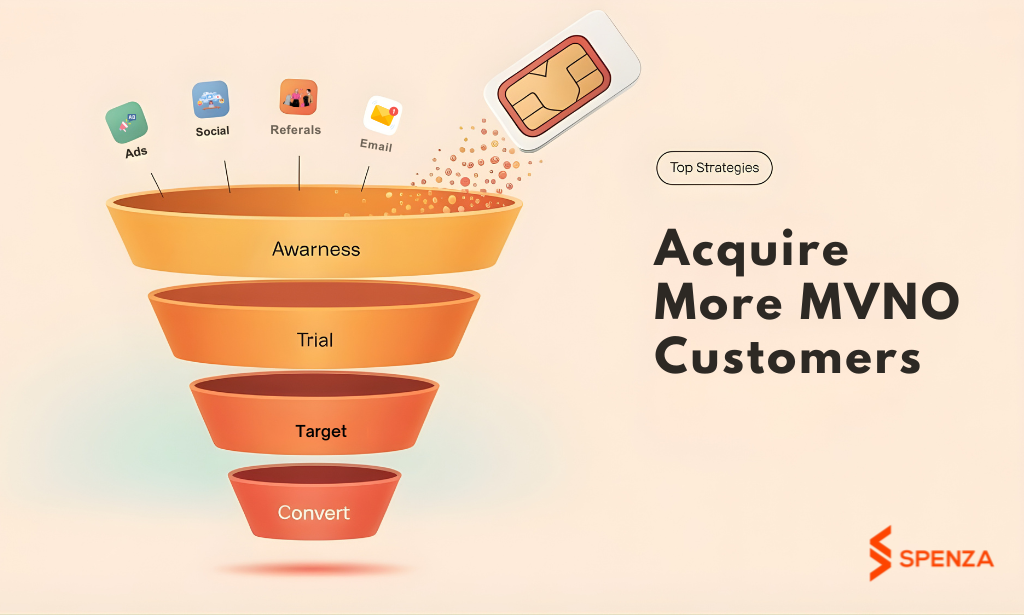
How Smart MVNOs Win: Growth Beyond Price Wars
The mobile market in 2025 is brutally competitive. You launched an MVNO, your service is solid, but you are still up against multi-billion-dollar carriers with massive marketing budgets. So how do you win new customers?
The old MVNO playbook relied on one tactic: be 10 percent cheaper than the big networks. In 2025, this approach fails. Major MNOs can lower prices instantly, and competing on cost destroys your margins while attracting low-value, high-churn customers.
With more than 1,300 MVNOs operating globally, the industry is more saturated than ever. Traditional MVNO marketing strategies such as discount-led acquisition and generic prepaid plans now lead to customer acquisition costs that exceed lifetime value. Research shows that 45 percent of MVNO churn comes from factors outside an operator’s control, yet many brands still behave as if price alone matters.
But a new generation of MVNOs is growing profitably. They are not the cheapest. They are the smartest. They succeed by building communities, creating differentiated MVNO brand positioning, and using advanced technology platforms to scale faster than traditional telcos.
This guide reveals the top MVNO marketing and customer acquisition strategies that empower operators to grow sustainably, reduce churn, and build long-term competitive advantage.
Why Traditional MVNO Customer Acquisition is Broken
Mobile Network Operators (MNOs) control the physical infrastructure. They have the spectrum, the towers, and the massive marketing budgets. MVNOs have none of these advantages. Yet most MVNOs still try to compete using the incumbent’s playbook—and lose.
Here’s why the old model is failing:
The Structural Disadvantage
- MVNOs lease network capacity, creating inherent technical dependencies
- Customer data traffic may be deprioritized during network congestion
- No control over network rollouts (5G, VoLTE, etc.)
- MNOs can always undercut on price when protecting market share
The Acquisition Cost Crisis
- Customer Acquisition Cost (CAC) has increased 40% since 2020
- Mass-market advertising yields low conversion rates
- Price-sensitive customers exhibit 3x higher churn rates
- No brand differentiation means no customer loyalty
The Competitive Reality MVNOs cannot win by being a “slightly cheaper version” of an MNO. They must compete asymmetrically.
The Core Problem: Why ‘Cheap Data’ is a Failing Strategy
The MVNO market is defined by asymmetric competition .
- MNOs (The Incumbents) compete on infrastructure. Their assets are cell towers and licensed spectrum . Their business model is a capital-intensive, mass-market play to maximize return on that infrastructure .
- MVNOs (The Challengers) compete on agility. Your primary asset is your brand, your customer focus, and your freedom from infrastructure debt .
Where MNOs are rigid, you must be flexible. Where they are generic, you must be specific . When an MVNO tries to compete with an MNO on its home turf (network quality or mass-market price), it will always lose. The “Discount MVNO” has no loyal customers and no defensible “moat” .
The new playbook requires you to stop fighting their war and start your own. It’s built on three strategic levers: Price, Niche, and Experience .
The New MVNO Growth Playbook
The fastest-growing MVNOs in 2025 follow a clear strategic evolution that moves them away from commodity pricing and toward defensible, long-term competitive advantages.

Stage 1: Commodity (The Trap)
- Compete on price alone
- Attract highly price-sensitive, disloyal customers
- Suffer high churn, thin margins, and weak unit economics
Stage 2: Community (The Transition)
- Build around niche segments with shared identity or needs
- Create a sense of belonging and participation
- Drive organic growth through word-of-mouth and peer-driven acquisition
Stage 3: Brand (The Moat)
- Establish authentic, differentiated MVNO brand positioning customers want to join
- Create ecosystem stickiness through integrations, perks, and loyalty programs
- Command premium pricing while maintaining low churn and higher lifetime value
The most successful next-generation MVNOs understand this progression and engineer their marketing and acquisition strategies to move intentionally from commodity, to community, to brand moat.
To effectively grow your subscriber base, MVNOs need focused marketing strategies that stand out in a crowded telecom market. Here are the top 4 approaches to achieve that:
Strategy #1: Hyper-Niche MVNO Positioning
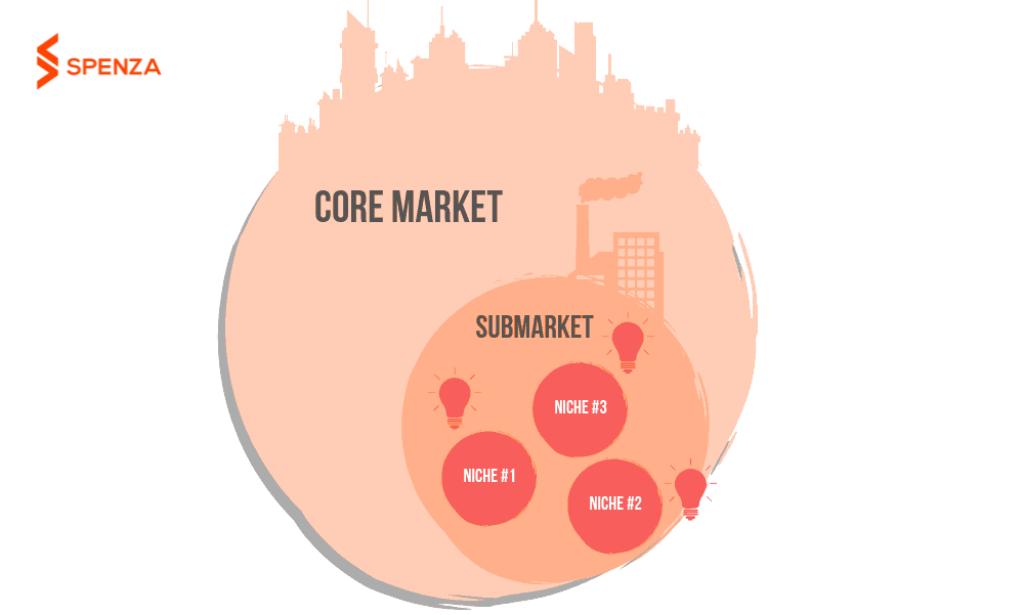
The #1 rule of modern MVNO marketing strategies: Your niche is non-negotiable. A “generic” MVNO is a dead MVNO. Success is defined by who you choose not to serve.
MNOs are built for scale. Their mass-market approach makes them inefficient at targeting small market segments. MVNOs can build profitable businesses around specific customer cohorts that are “too costly for MNOs to serve” with specialized products and messaging.
The most defensible niches are built on identity, not just utility:
B2C Niche Models: Targeting by Identity and Need
The most successful B2C MVNOs build their entire value proposition around customer identity.
Ethnic and Diaspora
This is the classic MVNO model. Lycamobile, for example, does not simply sell cheap international calling. It sells connections to homes for migrant communities. Its best acquisition channels are not national TV ads; they are grassroots brand ambassadors, community events, cultural festivals, and sponsorships of local cricket clubs.
Lifestyle and Affinity
These MVNOs target people defined by common interests or values. Examples include a plan for eco-conscious consumers that offers carbon offsets or a plan for sports fans, like Red Bull Mobile, that bundles exclusive athlete or event content.
Demographic Segments
These MVNOs focus on a specific age group or social cohort. GreatCall (now Lively) built a large business by serving seniors with simplified devices and dedicated support. On the opposite end, Giffgaff captured tech-savvy millennials with a 100 percent online, community-first brand designed for digital natives.
Utility-Based Niches: Low Defensibility
These niches are built on functional benefits that competitors can easily replicate:
- Budget MVNO
- Student plans
- Low-data or low-cost prepaid
These categories lack defensibility because another provider can simply go one dollar cheaper, making long-term retention weak.
Ask: “Would my customers feel a sense of belonging to this brand, or are they just here for a discount?” If it’s purely transactional, you have no moat.
B2B and Brand-Extension Models: The New Frontiers
The MVNO niche playbook is evolving beyond consumer-focused strategies to more stable, high-value enterprise and brand-led models. These approaches unlock growth opportunities that are defensible and less price-sensitive.
B2B, IoT, and M2M MVNOs
This model targets the enterprise mobile services segment. The value proposition is not a cheap SIM card but a sophisticated platform for managing connectivity across smart devices, fleet vehicles, or IoT sensors.
The customer acquisition channels are specialized: instead of TikTok or mass-market advertising, these MVNOs rely on LinkedIn, SEO for terms like “IoT SIM provider,” and targeted enterprise sales. This approach prioritizes long-term contracts and higher customer lifetime value over volume-based acquisition.
Non-Telecom Brand MVNOs (Brand Extension)
One of the most powerful modern strategies is the brand-extension MVNO. Here, an established non-telecom brand—such as a retailer, bank, or device manufacturer—launches an MVNO to increase customer loyalty and retention.
For example, Tesco Mobile does not aim to become the UK’s largest carrier. Instead, it uses its mobile service to deepen relationships with existing grocery shoppers, leveraging brand trust and in-store distribution. The mobile plan becomes a high-value ecosystem perk, seamlessly integrated into the brand’s broader offerings.
MVNO Niche Segmentation Matrix
| Niche Segment | Target Customer | Core Value Proposition | Top Acquisition Channels | Defensibility |
|---|---|---|---|---|
| Ethnic/Diaspora | Expatriate communities, migrants | Cultural content, low-cost international bundles, community messaging | Community events, ethnic media, grassroots ambassadors | High (identity-based) |
| Youth/Student | Tech-savvy millennials & Gen Z | 100% digital platform, community-driven, anti-establishment brand | Social media, member referrals, online word-of-mouth | Medium-High (community) |
| Creator/Influencer | Loyal fanbase of podcasters, YouTubers, musicians | Exclusive creator content, community access, brand alignment | Creator’s channels, social media, eSIM instant activation | High (parasocial bond) |
| B2B/IoT | Enterprises with connected devices | Custom integrations, multi-device management, full platform control | LinkedIn, B2B content marketing, industry events | Medium (technical complexity) |
| Lifestyle (Eco/Gaming) | Values-driven or hobby-focused users | Values alignment, performance optimization, specialized features | Interest-specific communities, influencer partnerships | Medium (values-based) |
For the latest in MVNO innovation and market shifts, check out more trends here.
Strategy #2: Community-as-Moat

A niche strategy defines who you target. A capital-efficient acquisition strategy defines how you reach them without the massive budgets of an MNO. In modern MVNO marketing, the goal is to shift from “buying” customers with expensive mass-media campaigns to earning them through digital precision, engagement, and community evangelism.
The ultimate MVNO marketing strategy is not advertising—it’s architecture.
The Digital-First Offensive: Growth Hacking on a Lean Budget
For most modern MVNOs, digital marketing is the primary, measurable, and low-cost acquisition engine.
SEO & Content Marketing: Capture high-intent customers through long-tail keywords specific to your niche. Instead of ranking for generic terms like “mobile plan,” target phrases such as:
- “Best international calling SIM”
- “Senior-friendly cell plans”
- “IoT SIM provider for fleet management”
Paid Social & Influencer Marketing: Build credibility and social proof quickly. The gold standard is Mint Mobile’s partnership with Ryan Reynolds. His humorous, irreverent voice is the brand’s voice, creating an “us-versus-them” positioning that frames Mint as the lovable underdog against the big carriers—a textbook challenger brand strategy.
The Community-as-Channel Model
The most efficient MVNOs engineer virality, turning their customers into the primary sales force. This is the ultimate growth hack.
Giffgaff is the undisputed master of this approach. Its acquisition strategy is its community:
- The Model: Giffgaff’s “run by you” ethos outsources core business functions to its members
- Acquisition (Referrals): Members earn “Payback” points (convertible to cash) for bringing friends to Giffgaff.
- Support (Retention): Instead of call centers, members earn points for answering community questions, reducing operational costs while increasing engagement.
This model is a strategic masterpiece, simultaneously lowering customer acquisition and operational costs, all while creating a sense of ownership and loyalty that traditional MNOs cannot replicate.
Strategy #3: Engineering Frictionless Value
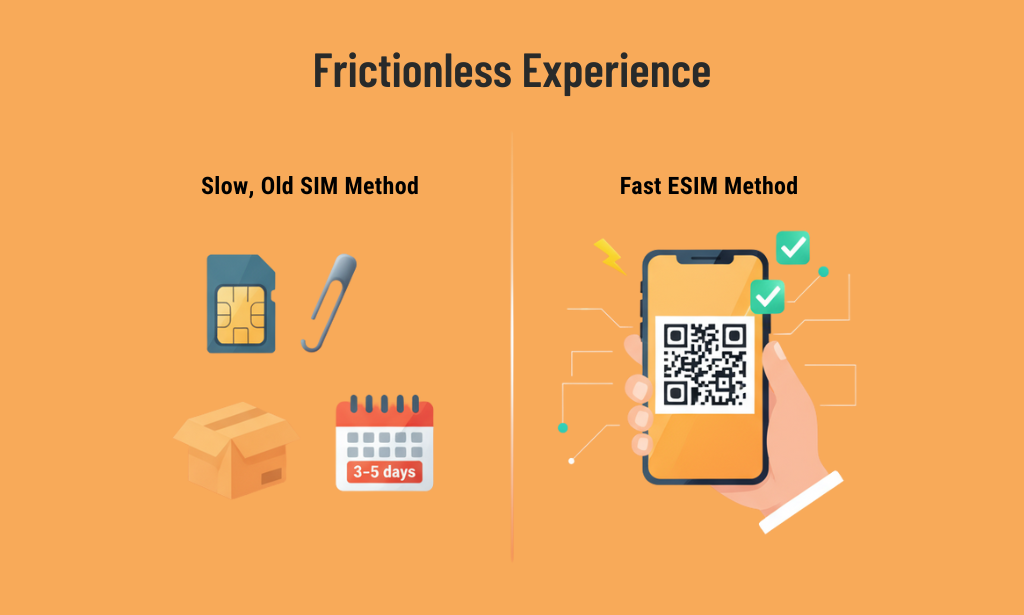
A strong “Niche” gets a customer’s attention. A smart “Community” model acquires them cheaply. A frictionless “Experience” is what builds the long-term brand .
This means leveraging simplicity and removing every possible barrier to switching.
Disruptive Pricing:
Mint Mobile’s strategy isn’t just “being cheap”—it’s a brilliant pricing model innovation .
Mint introduced the “concept of bulk purchases” to wireless: “Buy More, Save More” . Here’s how this 2-step funnel works:
- Acquisition (The Hook): A customer gets a low-priced 3-month “intro offer” (low-risk trial)
- Retention (The Lock-in): To keep that low monthly rate, the customer must renew for 12 months
This model is a “Trojan Horse.” It brilliantly markets “no-contract flexibility” while achieving the 12-month customer commitment and predictable revenue that MNOs get from contracts . Instead of a penalty for leaving, it provides a strong financial incentive for staying .
Frictionless Onboarding: The Power of eSIM
The single greatest acquisition lever is the reduction of switching friction .
Traditionally, this meant no-contract plans and Bring Your Own Device (BYOD) programs, eliminating the psychological and financial barriers of long-term contracts and expensive device subsidies.
Today, the Embedded SIM (eSIM) is the final frontier of this strategy .
- The Old Way: A customer sees an ad. They go to your website. You ship them a physical SIM card. They wait 3-5 days, the “purchase intent” cools, and they have to use a paperclip to swap the SIM.
- The eSIM Way: A customer sees an ad. They scan a QR code. Their service is activated instantly .
This 100% digital, instant activation flow is the ultimate acquisition tool . It captures customers at their peak moment of intent.
Myth: MNOs hate MVNOs and see them as pure competition.
Fact: MNOs deliberately partner with MVNOs as a sophisticated market segmentation strategy. An MNO’s premium brand can’t aggressively chase low-cost or niche segments without risking brand dilution. The MVNO partner acts as a “surgical tool”, allowing the MNO to capture revenue from those segments through a wholesale agreement — without damaging its core brand.
Strategy #4: Ecosystem Integration
The most advanced MVNO growth strategy treats mobile service not as a standalone product but as strategic connective tissue within a multi-service ecosystem.
By integrating mobile into a broader ecosystem, MVNOs can acquire customers cheaply, boost retention, and increase lifetime value.
Rakuten Mobile leverages its 70+ services—including e-commerce, fintech, travel, and streaming to create a powerful acquisition and retention flywheel.
Rakuten acquires customers through cross-promotion, offering bonus points for activating Rakuten Mobile, keeping acquisition costs near zero. The mobile plan then drives retention, as users earn points on monthly payments redeemable across the ecosystem, boosting engagement and loyalty.
Mobile can act as a loss leader while increasing revenue across higher-margin services. Rakuten’s churn is 50% below the industry average, and acquisition costs are spread across the ecosystem, making the business more sustainable than a standalone MVNO.
Other companies can replicate this by bundling mobile with existing products, unifying loyalty programs, or partnering with complementary services to drive acquisition, engagement, and retention.
Growing an MVNO can be hard. Managing niche markets, building communities, and creating smooth customer experiences often needs technology, data, and expertise that many MVNOs lack. Spenza Modern MVNE makes it easy for operators to grow their MVNOs, turning modern strategies into simple, scalable results.
Spenza: Grow Your MVNO Without the Complexity
A brand that wants to launch a mobile service suddenly faces a mountain of telco-specific problems: negotiating MNO contracts, managing SIM/eSIM logistics, building a billing and charging system, and navigating the global nightmare of telecom taxes and regulatory compliance. Most device OEMs, retailers, or brands are not equipped for this.
This complexity is the single biggest barrier to entry — and this is where a white-label MVNO platform becomes the essential enabler.
Platforms like Spenza are built to solve this exact problem. Positioned as the “Stripe + Shopify for connectivity,” they provide a no-code platform that handles the entire backend.
A brand or OEM can use Spenza’s platform to:
- Launch MVNO in 7 Days, Not 18 Months: An integrated Shopify app creates a branded online store instantly.
- Handle All Connectivity: Access a marketplace of “fit-for-purpose” global connectivity plans without complex negotiations.
- Automate the “Boring Stuff”: The platform manages billing, payments, tax compliance, and regulatory burdens.
- Orchestrate eSIM: Manage all eSIM activations and logistics through a unified platform, enabling that “instant” customer experience.
This “Telecom-as-a-Service” model abstracts away the complexity, allowing a brand to focus 100% on what it does best: marketing to its niche and building its community.
Conclusion: Driving MVNO Growth in 2025 and Beyond
The MVNO market in 2025 is fiercely competitive, and competing on price alone is no longer a viable strategy. The most successful MVNOs are those that embrace hyper-niche positioning, foster community-driven growth, and deliver a frictionless, technology-enabled customer experience. By focusing on identity-based niches, leveraging digital-first acquisition channels, and integrating mobile into broader ecosystems, MVNOs can reduce churn, increase customer lifetime value, and build a defensible market position.
For MVNO operators and brands looking to scale efficiently, platforms like Spenza Modern MVNE simplify the complexity of connectivity management, eSIM activation, billing, and regulatory compliance, allowing you to focus on marketing to your niche and growing a loyal customer community.
In a saturated mobile market, the winners will be the MVNOs that stop competing on price and start competing on identity, experience, and ecosystem integration. By adopting these modern MVNO marketing strategies, operators can not only survive but thrive in 2025 and beyond.
FAQs
An MVNO (Mobile Virtual Network Operator) sells mobile plans without owning network infrastructure—they lease capacity from MNOs and handle customer-facing services.
Yes — modern MVNOs increasingly use eSIM activation, enabling instant digital onboarding and reducing the friction of traditional SIM logistics.
Book a demo to see how Spenza’s platform can help you launch your MVNO in just days.


